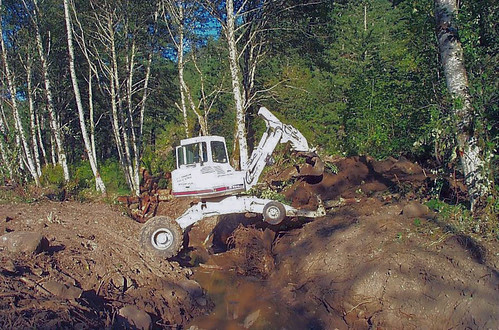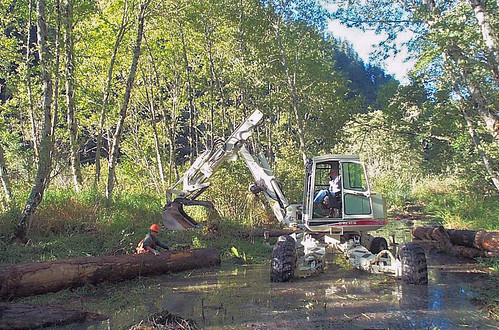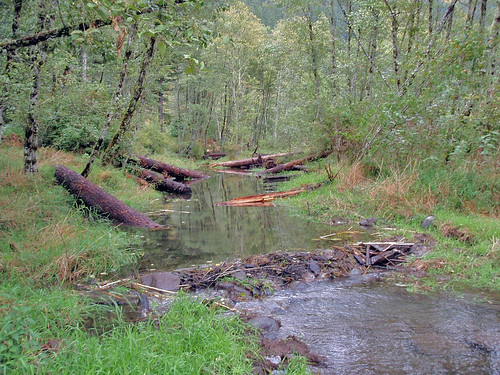
Annual construction efforts on a multi-year restoration project to improve water quality and create high-quality fish habitat is currently in progress on the Rogue River-Siskiyou National Forest in Oregon.
"This is one of the most strategic areas on our forest where we can make a significant difference in fish habitat and water quality improvements. We are focusing our investments accordingly," said forest fisheries program manager Susan Maiyo.
The project is on an important salmon-bearing tributary of the Illinois River, called Sucker Creek. This year's efforts will restore the natural meandering pattern of the creek by moving the main stem channel and creating deep pools with large wood structures. The area had been altered by years of hydraulic mining.

According to forest hydrologist and project manager Liz Berger, "We have put together the project using natural channel design techniques to mimic a stream system appropriate to the site. This will cool water temperatures and reduce fine sediments in Sucker Creek."
The watershed is an established stronghold for threatened Coho salmon and other species so, in addition to the main stem channel work, the project will create a side channel used for spawning and rearing by Coho and Chinook salmon, steelhead, and other native fish. The side channel will connect to a rearing pond and back to the main channel to facilitate the movement of fish throughout the system.
The creek is considered to be one of the forest's highest priorities for watershed restoration which is why, in 2006, the forest and the Illinois Valley Watershed Council started planning the multi-year project.
The Sucker Creek Project partners include the forest, the Illinois Valley Watershed Council/Soil and Water Conservation District, local contractors, and a variety of funding and partnering organizations.
Under a challenge-cost-share agreement between the Forest Service and the Watershed Council, the project is utilizing skilled local contractors to excavate and shape the stream channel and adjacent floodplain.

Heavy equipment is being used to transport and install large rock and wood structures in an effort to create a more natural environment for the fish to rear their young. And despite the large-scale earth moving of dirt, rock and wood, the riparian area is showing quick recovery from prior years' efforts. A combination of replanting and natural re-growth of native vegetation is making it virtually impossible to recognize the work done two years ago.
This year's project efforts are expected to be completed in September. After the construction work, the primary flow will return to the main stem and the adjacent riparian area will be replanted with native trees and shrubs.
Partial funding for this year's project was provided through the Whole Watershed Restoration Initiative, of which Ecotrust, the Forest Service, and the National Oceanic and Atmospheric Administration Fisheries are major donors. Other contributors include the Oregon Department of Environmental Quality and the Oregon Watershed Enhancement Board.
